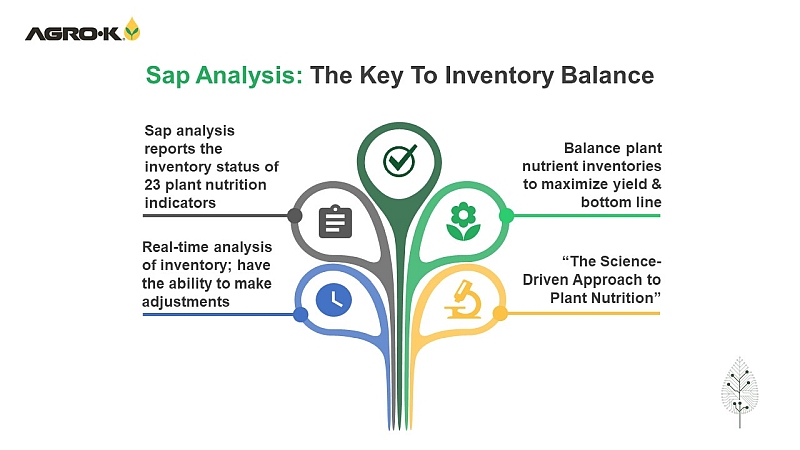Focus On IPM: Biocontrols Provide Progressive Grower Solutions

Nearly 500 people attended the Biocontrols USA 2016 Conference and Expo recently in Monterey, CA. (Photo credit: David Eddy)
Biocontrol was the highlight, but its crucial role in integrated pest management programs was the underlying focus of the recent Biocontrols USA 2016 Conference & Expo. Effectively — and constantly adapting — to use all of the tools in your crop protection toolbox, including biopesticides and other biocontrols, was the consistent message throughout the two-day event.
“We’re really going to have to change the way we do things,” said Denise Manker, Director, Agronomic Development of Biologics, Bayer CropScience Biologics Division.
More than 450 growers, certified pest control advisers, researchers, and allied company representatives attended the event — presented by Meister Media Worldwide in conjunction with the Biopesticide Industry Alliance — in Monterey, CA, March 3-4.
Grounded, how-to sessions educated growers and crop advisers on a variety of topics. Presentations provided information on everything from details on new biopesticide product releases for 2016 and techniques for implementing a biocontrols trial in your field or orchard, to effectively combining biopesticides and beneficials and building mycorrhizae in soils for improved plant health. One session even covered up-and-coming techniques, including RNA interference and the highly publicized CRISPR, which may well be the next significant leaps in pest control technology.
Dozens of attendees took advantage of a field tour of biocontrol use in Salinas Valley vegetable fields and in the production system at greenhouse ornamentals young plant grower, Pacific Plug & Liner in Watsonville, CA. Others took part in a three-hour workshop offering hands-on advice to improve the use of biocontrol in their operations.
In addition to the day and a half of conference educational sessions, attendees had an opportunity to meet one-on-one with nearly 40 leading biocontrol product and service suppliers from around the country and around the world.
Benefits In Vegetable Crops
Dr. Surendra Dara led off the conference’s Vegetables breakout session with a how-to presentation on Managing Endemic and Invasive Insect Pests in Organic and Conventional Vegetables. Dara, who serves as Strawberry and Vegetable Crops Advisor and Affiliated IPM Advisor with University of California Cooperative Extension, offered growers useful biocontrol tips for a number of troublesome pests, including:
- Western flower thrips in lettuce,
- Green peach aphid and cabbage aphid in broccoli,
- Bagrada bug in cole crops,
- Tomato bug in tomato and zucchini, and
- Root aphids in celery.
“Biopesticides can provide effective control, and they can play an important role in vegetable IPM,” Dara said.
As with all elements in an integrated pest management program, biocontrol requires a good knowledge of the crops and the pests you’re dealing with, in addition to the tools you want to use.
“To be successful, it’s important you understand damaging and/or vulnerable stages of pests, as well as a potential biopesticide’s modes of action. Then you can select the appropriate materials based on the pest or its life stage,” he says.
Consider how the products work in combination with other biological or conventional materials, he adds.
“Biopesticides shouldn’t necessarily be thought of simply as standalone products,” he said.
While you’ll want to understand all the materials you’re working with in order to avoid incompatible combinations, some materials might work as well or better in combinations as they do alone, Dara said.
Dr. Mike Amaranthus, founder and scientist for Mycorrhizal Applications, covered the benefits of maintaining populations of mycorrhizae in the soil for vegetable crops. And it’s all about the roots.
“There are symbiotic associations between plants and mycorrhizal fungi,” Amaranthus said. “Mycorrhizae serve as an extension of the plant root system in the soil, increasing the effective root mass of the plant by as much as 100 or even 1,000 times.”
That extension of the root system can lead to increased nutrient uptake as the fungus’ hyphae explore beyond the rhizosphere for immobile nutrients, transporting them to the plant. Other benefits include improved drought tolerance and enhanced salt tolerance of the plant, and improved soil structure, as the mycorrhizae can positively influence soil aggregation, soil oxygen, and carbon levels. And, he added, many mycorrhizal formulations are certified for use in organic production.
“By inoculating soils with mycorrhizae, you’re using the power of nature to optimize crop yield, improve plant health, and increase your return on investment,” Amaranthus said.
Fruit, Nut Highlights
One of the breakout sessions was entitled “Fruit and Tree Nuts: Hands-on, How-To Topics.” Here are a few of the many tips and talking points growers and PCAs came away with, organized in order of presentation.
“Exploring The Benefit Provided by Green Lacewings in Almond and Pistachio Orchards” – Bradley S. Higbee, Director, Entomology Research, Wonderful Orchards, Shafter, CA
In California, there now 1.3 million acres of almonds and pistachios, worth about $6 billion in annual farmgate value, with the top pest being navel orangeworm (NOW). Wonderful Orchards, the largest grower of the two crops in California, with about 83,000 acres, makes extensive use of biocontrols to control NOW.
That’s largely because of the prevalence of green lacewing (GLW), a NOW predator, Higbee said. “Green lacewing are ubiquitous,” he said. “You can’t go 5 minutes (in an orchard) without seeing an egg or a hatched egg.”
Higbee said they use pheromone mating disruption on NOW, achieving at least a 60-70% decrease in pest pressure over control blocks. But he emphasized that they certainly don’t give up on blocks that have become overrun by NOW, and will use a pyrethroid spray if necessary, though that is definitely not his preferred response.
“Repeated applications of pyrethroids appear to have a large (detrimental) impact on GLW populations, he said, “although they seem to be relatively tolerant of other insecticides used in this study.”
“Maximizing Results with Biopesticides in Grape Pest Management Programs” – Dr. Timothy Johnson, Vice President of Product Development, Marrone Bio Innovations, Davis, CA
People tend to think of biocontrol as a new approach, but nothing could be further from the truth. In fact, there is a 70-year history of biopesticides in the U.S.
“They are faster to bring to market and less expensive to register,” said Johnson, “because the cost of time can really add up.”
Johnson cleared up a common misconception on biopesticides, noting that not all biopesticides are organic compliant (NOP and/or OMRI), nor are all NOP/OMRI listed pesticides considered to be biopesticides. As examples of the latter, he said certain formulations of sulfur and copper-based fungicides and paraffinic oils are approved for organic use but are not biopesticides.
Biopesticides are a particularly good fit for grapes, because they have a long production season with numerous pests, and are high-value crop on which growers need to be wary of pesticide residues.
“Residues are very important to winemakers and consumers,” he said. “Table grapes go directly from the field to the consumer; grape juice and raisins are heavily consumed by children.”
And while effective, biopesticides are not a silver bullet, he concluded: “The time to use a biopesticide is not when all else has failed.”
“Biological Fungicides and Methyl Bromide Alternative Pre-plant Fumigants” – Mark Bolda, Farm Advisor in Strawberries and Caneberries, University of California Cooperative Extension, Watsonville, CA
Because growers have lost access to methyl bromide to fumigate and take care of both nematode pests and tough diseases such as verticillium and macrophomina, biocontrols have become more important than ever before.
“Verticillium is taking fields down,” Bolda said, emphasizing that is not the worst of it. “Also, these problems don’t come in isolation – often verticillium is accompanied by other problems.”
He went through a wide number of biocontrols in his presentation, emphasizing that growers are going to need to believe in them if they are going to be effective.
“You can’t just stand there and say, ‘This is not going to work,’” Bolda said.
Berry growers in Northern California are not only seeing early plant response with certain biocontrols, they are also starting to use them as transplant root dips. These dips were used in the past, but abandoned because methyl bromide was so extraordinarily effective it made them unnecessary. That is obviously no longer the case.
“The use of effective biological fungicides can play a role in making up the plant performance lost as we transition away from traditional methyl bromide pre‐plant fumigation,” he concluded.









